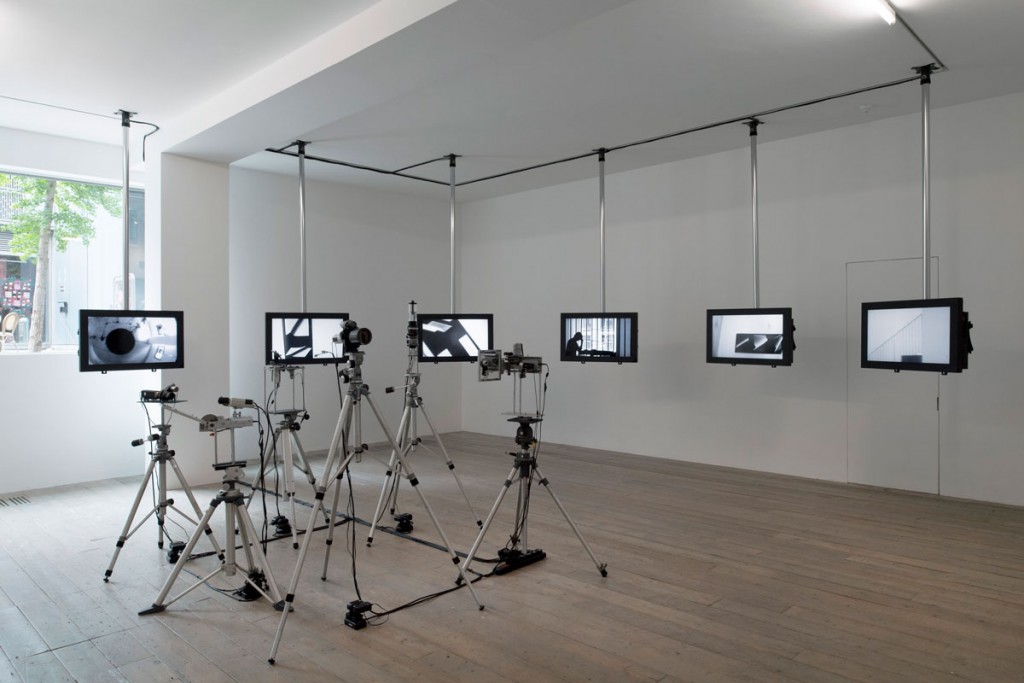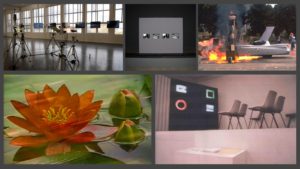VIDEO REWIND: Steina Vasulka
— 'Machine Vision', 1978
18 — 27 May 2017

As part of 'VIDEO REWIND: A look back from early video works from the 1970s and 1980s', 'Machine Vision' by Steina allows for a reflection on mechanical perception and artificial vision.
“When a human being operates the camera, the assumption is that the camera is an extension of the eye. You move the camera the way you move the head and the body. In video, unlike photography or film, the view finder is not necessarily an integral part of the camera apparatus. . . . In the late seventies, I began a series of environments titled Machine Vision and Allvision, with a mirrored sphere. Another variation has a motorized moving mirror in front of the camera so that depending on the horizontal or vertical positioning of the mirror, the video monitor displays a continuous pan or tilt either back/forth or up/down. A third variation is a continuous rotation through a turning prism, while still another has a zoom lens in continuing motion, in/out. These automatic motions simulate all possible camera movements freeing the human eye from being the central point of the universe.” — Steina
A mirrored sphere, positioned in the middle of a crossbar reflects the image of surrounding space. Two video cameras, attached to each end of the crossbar are looking in at the mirrored surface. The crossbar — now an assembly of mirrored sphere and two cameras — slowly rotates on the turntable with cameras orbiting the sphere. Since each camera sees half of the reflected space, the whole space becomes observable.
The turntable, which sits on a low pedestal, holds the driving mechanism for the rotation — a slip-ring assembly and a DC motor. The slip-ring assembly provides uninterrupted video signals from, and power to, the cameras. The video signal from two cameras connects to two (or more monitors) arranged in the exhibit space.




